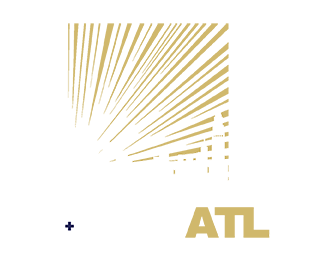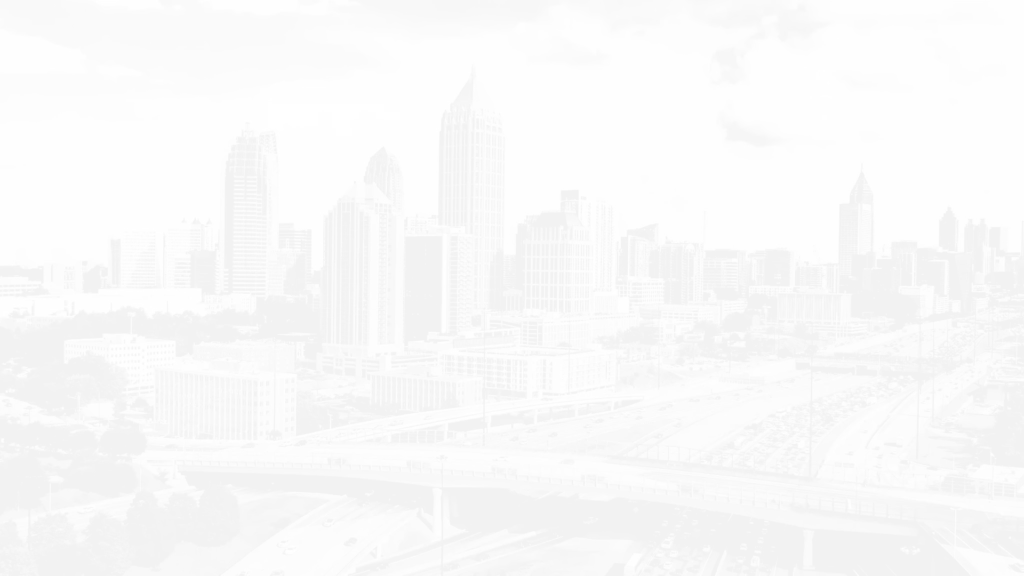Uninsured Motorist coverage (UM) or Underinsured Motorist coverage (UIM) can be a complicated topic for…

Georgia is the eighth most populous state in the nation, but the Peach State ranks fourth in the country for hit-and-run car accidents. That means motorists in Georgia have a greater chance of being struck by a motorist who leaves the scene than drivers in just about any other part of the country.
Hit-and-run accidents are also becoming far more common. Between 2012 and 2021, the number of hit-and-run accidents in the United States rose by 89.4%, according to data from the National Highway Traffic Safety Administration. In Georgia, that figure was an even more troubling 113.5%.
Nathan Fitzpatrick is an experienced personal injury attorney who has advocated on behalf of hundreds of car accident victims, some of whom were struck and injured by hit-and-run drivers. In this article, Car accident attorney Fitzpatrick sheds light on the legal options that injured road users have when motorists who cause accidents flee the scene. He also discusses the steps that you can take to protect yourself against hit-and-run drivers better.
Does Uninsured Motorist Cover Hit and Run Incidents?
If you are involved in an accident with a driver who flees the scene, one of the first questions you will likely ask yourself is, "Does uninsured motorist protection cover hit-and-run accidents?" That is a straightforward question, but the answer to it is surprisingly complex.
Uninsured motorist coverage provides protection against hit-and-run drivers most of the time, but there are situations where this kind of car insurance coverage will be of little use.
Adding uninsured motorist coverage to your Georgia auto insurance policy is a very good idea, but it will not provide you with complete protection against hit-and-run drivers. That is because Georgia is one of six states that do not allow policyholders to use their uninsured motorist coverage to pay for property repairs.
Uninsured motorist coverage in Georgia can be used to pay medical bills and compensate injured road users for their lost income, but it can not be used to cover car repairs.
That doesn't mean you will have to foot the bill yourself if a hit-and-run driver in Georgia damages your vehicle. If your auto policy includes collision coverage, your vehicle repairs should be covered. However, you may not receive all of the money you need to repair your car if the facts suggest that you were partly to blame for causing the accident.
Georgia is an at-fault state that follows the comparative negligence doctrine, meaning police officers are required to allocate blame at car accident scenes. If a police accident report indicates that you were 20% responsible for causing an accident, the amount of compensation you receive could be reduced by 20%, even if the other driver fled the scene.
The Rising Concern of Uninsured Drivers: Georgia Analysis
Hit-and-run car accidents may be so common in Georgia because so many drivers in the Peach State do not carry the auto insurance coverage required by law.
When researchers from the Insurance Institute for Highway Safety studied uninsured driver trends across the country, they discovered that about 12.4% of the drivers in Georgia operate their vehicles without insurance.
Few of these motorists drive without insurance because they cannot afford the coverage the law requires. According to the financial news website MarketWatch, purchasing a car insurance policy that provides minimum liability coverage only costs $673 per year in Georgia. That turns out to be just $56 per month.
Why, then, do so many drivers in Georgia choose not to purchase car insurance? In many cases, it is because they could not buy car insurance even if they wanted to. Besides living paycheck to paycheck, making the cost prohibitive, a motorist could find themselves in this situation if they do not have a driver’s license or their driver’s license is suspended or revoked.
Motorists may also decide to risk driving without insurance because previous accidents or drunk driving convictions have made the cost of obtaining even a basic policy prohibitively expensive.
Understanding Coverage: The Difference Between Uninsured and Underinsured Motorist Coverage
If you purchase a car insurance policy in Georgia, you will have the option of adding underinsured and uninsured motorist coverage, also known as UM and UIM for short. These two types of car insurance coverage may sound very similar, but they provide protection in different situations.
Uninsured Motorist Coverage
You purchase uninsured motorist coverage to protect yourself financially if you are in a car accident caused by an at-fault driver who does not have insurance or fled the scene. You would file a claim with your own insurance provider in both of these situations because you would not be able to obtain compensation from the at-fault driver’s insurance policy.
Uninsured motorist coverage in Georgia would pay your medical bills and compensate you for your pain and suffering and lost income, but again, it would not cover the costs of repairing your vehicle.
Underinsured Motorist Coverage
Georgia's required insurance coverage of $50,000 for bodily injury and $25,000 for property damage per accident usually covers minor cases. In severe situations, like major vehicle damage or a critical injury, such as a traumatic brain injury, these limits may be insufficient.
Underinsured motorist coverage pays for the shortfall, addressing the gap when an at-fault driver's liability insurance falls short.
Collision Coverage vs. Uninsured Motorist Coverage: What's Best for You?
The car insurance laws in Georgia were passed to make sure that road users are compensated when they suffer injury, loss, or damage due to the negligent actions of other road users, so why can’t policyholders with uninsured motorist coverage submit a claim when hit-and-run drivers damage their cars? This rule seems to contradict the purpose of having mandatory minimum automobile coverage, but it was put into place to prevent insurance fraud.
State Restrictions and the Necessity of Collision Coverage
Georgia, along with states like California, Illinois, Ohio, Louisiana, and Colorado, does not allow uninsured motorist insurance to pay for property damage repairs. This is to prevent fraudulent claims from policyholders attributing all vehicle damage to hit-and-run incidents. As a result, Georgia drivers usually add collision coverage to their policies, which pays for vehicle repairs in almost any situation, including at-fault accidents and damage to parked cars.
Collision Coverage and Lender Requirements
While Georgia law does not mandate vehicle owners to purchase collision coverage, it is commonly required by lenders for financed or leased cars. Most insurance companies offer comprehensive auto insurance policies that include uninsured, underinsured, and collision coverage for broader protection.
Hit and Run Accidents: How Does Coverage Play a Role?
People flee accident scenes when they believe that sticking around would do them more harm than good. Some hit-and-run drivers have open warrants or fear being arrested on drunk driving charges, but other motorists flee because they are seized by panic and do not think. The kind of auto insurance coverage that pays compensation after a hit-and-run accident is determined by whether or not the fleeing driver is identified.
Fleeing Driver Is Identified
If a hit-and-run driver is apprehended by law enforcement or steps forward, his or her victims can seek compensation by filing lawsuits or submitting insurance claims. If the hit-and-run driver carried only minimum levels of insurance coverage, the policy limits may not be sufficient to provide fair compensation. UIM coverage could make up the difference in this situation, but not all vehicle owners have it.
Fleeing Driver Remains at Large
If you are injured in a car accident involving a hit-and-run driver who does not step forward and eludes the police, you could still file a claim if your auto insurance policy includes uninsured motorist coverage.
This kind of insurance protects you rather than your car so that you could file an uninsured motorist claim even if a hit-and-run driver injured you while you were on foot and your car was in your driveway. If the other driver was uninsured or unidentified, you should be covered.
State Mandates and Legalities: The Importance of Being Covered
Drivers in Georgia are required to purchase insurance policies on their vehicles that provide at least $25,000 of property damage coverage per accident and at least $25,000 of bodily injury coverage per person.
When two or more people are injured in an accident, a Georgia auto insurance policy must provide at least $50,000 of bodily injury coverage. This coverage was mandated to provide road users with a path to compensation when the negligent actions of others cause them injury. Carrying insurance also protects vehicle owners.
Legal Requirement for Insurance Proof: Georgia law O.C.G.A. 40-6-10
Georgia law requires motorists to keep an insurance card in their vehicles at all times to establish that the mandatory coverage is in place. When drivers cannot produce a valid insurance card, they can be cited for driving without proof of insurance.
Consequences of Driving Without Insurance
When drivers do not have auto insurance, they can be charged with a misdemeanor. If convicted of driving without insurance in Georgia, you may face a fine ranging from $200.00 to $1,000.00, incarceration for up to 12 months, or both. Additionally, there's a mandatory suspension of your driver's license for a period ranging from 60 to 90 days.
They also lose their driving privileges for between 60 and 90 days. Custodial sentences are rarely handed down for driving without insurance in Georgia, but being involved in an accident that causes serious injury or wrongful death would greatly increase an offender’s chances of incarceration.
Risks of Expired Licenses
Drivers who pay the insurance premiums on their cars are sometimes charged with driving without insurance because they forgot to renew their driver’s licenses. Insurance companies keep track of driving records so they can increase rates when their policyholders rack up penalty points or are arrested for drunk driving, and they report a lapse in coverage when a policyholder’s license expires and is not renewed.
Accident Aftermath: Navigating the Case with an Uninsured Motorist
In the U.S., a significant portion of hit-and-run accidents involve uninsured drivers, complicating the process of obtaining compensation. While identifying the fleeing driver is crucial, the prevalence of uninsured motorists in such incidents often complicates the entire process.
This fact is especially true in resource-strapped cities where these cases are often not a priority unless there are serious injuries or fatalities. In fact, these cities often have limited financial resources and manpower, which is why hit-and-run accident investigations are considered a low priority unless road users are seriously injured or killed.
The Importance of Uninsured Motorist Coverage
Uninsured motorist coverage plays a pivotal role in protecting victims in hit-and-run accidents. It becomes particularly vital in instances where the at-fault driver remains unidentified or uninsured, offering a safety net for compensation.
Understanding this coverage's significance sets the stage for navigating the complexities that follow in such incidents.
Navigating Compensation in Hit-and-Run Incidents
This coverage ensures compensation even without the identification of the other driver.
The Role of Law Enforcement and Victim Response
The identification and apprehension of the fleeing driver by law enforcement significantly increase the chances of fair compensation. Providing detailed descriptions at the accident scene is key to facilitating this process.
Challenges with Insurance Companies
As mentioned, contending with insurance companies can be challenging, as they often aim to minimize settlements and may be skeptical about claims involving hit-and-run drivers. A thorough and well-documented account of the incident is crucial.
The Importance of Legal Assistance
Experienced personal injury lawyers are adept at uncovering crucial evidence and witnesses that might be missed in police investigations. Their ability to amplify the case through public awareness and offering rewards for useful information can significantly enhance the prospects of a successful claim. They often provide a free consultation, giving clients an opportunity to understand their legal options without initial costs.
Medical Expenses and Compensation: What to Expect When the Unexpected Happens
Hit-and-run accident victims can also find it difficult to convince car insurance companies that their injuries are legitimate. Medical bills and physical therapy expenses usually make up a large part of a car accident settlement, so insurance companies have good reason to keep them as low as possible.
Insurance companies usually question medical expenses by claiming that the injuries in question were preexisting, are being exaggerated, or were caused by something other than a vehicular accident.
Lawyers who have negotiated settlements with insurance companies may anticipate this tactic, and they could help their clients to prepare for it by advising them to:
Seek treatment right away: Some of the most common and most serious car accident injuries do not present symptoms right away, so you should seek medical treatment after a crash even if you feel fine. Going to an emergency room right away could also prevent an insurance company from claiming that your injuries were suffered before or after the accident.
Attend all medical appointments: An insurance adjuster might not believe that your injuries are as painful and debilitating as you claim if you miss appointments with your doctors or physical therapists.
Keep a diary: A diary that details your symptoms and discomfort on a daily basis could be helpful if you decide to seek compensation for pain and suffering. That is because these damages are often calculated by assigning a per diem (daily) dollar value to pain.
Hold onto doctor and hospital bills: Obtaining duplicate medical bills from doctors or hospitals is sometimes a frustrating and time-consuming process. If you want your claim to be settled quickly, you should hold onto these documents.
Coverage Essentials: Protecting Yourself from Uninsured Drivers
You can protect yourself from uninsured motorists by driving carefully and following all traffic laws. Insurance is also important because accidents happen even when we are careful, but you will have to purchase more than a basic auto policy if you want to protect yourself against hit-and-run drivers.
If you want to be covered after a hit-and-run accident, your car insurance policy should include:
Uninsured motorist coverage: Uninsured motorist coverage is vital for incidents involving hit-and-run drivers or uninsured motorists. It is divided into Bodily Injury, which covers medical bills, pain and suffering, and importantly, lost wages for you and your passengers. The Property Damage portion addresses damages to your vehicle and may extend to personal property like homes, fences, and items such as cell phones or laptops. However, it's crucial to understand that this coverage might not fully cover car repair costs, including lost wages in certain scenarios.
Collision coverage: This is the kind of coverage you need if you want your insurance company to cover your car repair bills after a hit-and-run accident. Collision coverage will also pay your repair bills if you cause an accident.
Underinsured motorist coverage: When hit-and-run drivers are identified and have insurance, their victims can file claims. When an at-fault driver’s policy limits are not high enough to provide fair compensation, this type of coverage can make up the difference.
Beyond the Basics: Exploring Auto Liability Insurance and Additional Coverage Options
Shopping for car insurance can be bewildering because there are so many options to choose from. You don’t want to spend good money on coverage that you do not need, but you also don’t want to take any chances. Let’s take a look at some of the most common car insurance coverage options.
Liability Coverage
This is the kind of auto insurance that state law requires. There are two types of liability coverage. Bodily injury liability insurance pays medical bills and expenses. Property damage liability insurance pays for vehicle repairs.
Liability insurance is often referred to as a series of figures. The first figure is the amount of bodily injury coverage per person, the second figure is the amount of bodily injury liability coverage per accident, and the third figure is the amount of property damage coverage per accident.
Georgia law requires 25/50/25 liability coverage, but lenders that offer car leases usually require liability insurance limits to be at least 100/300/50.
Another important aspect to keep in mind is that your auto liability insurance won't cover your car repairs and medical expenses after a hit-and-run. Moreover, auto liability insurance doesn't provide coverage for damages to your vehicle in at-fault accidents, placing more emphasis on the need for comprehensive coverage.
Comprehensive coverage fills this gap by covering damages to your vehicle from various non-collision incidents, like theft, natural disasters, and vandalism, providing complete protection for your vehicle.
Uninsured and Underinsured Coverage
This option is essential when involved in accidents with drivers who have no insurance or insufficient insurance or flee the scene. It's common to align these coverage limits with liability insurance limits.
Notably, Georgia law permits "stacking" multiple policies, which can be particularly beneficial when you incur $200,000 in damages, but the at-fault driver has only the minimum auto liability insurance. Your UM/UIM policy can cover the remaining costs in such cases.
Collision Coverage
This type of insurance will cover your repair costs even if your car was damaged in an accident that you caused. Collision coverage will also pay your repair bills if you are struck by a hit-and-run driver. If you are involved in an accident and the at-fault driver remains at the scene and has insurance, you would file a claim with their insurance company.
Gap Protection
Car lease payments are based on average monthly depreciation, but motor vehicles do not depreciate in a linear fashion. This is why the amount the insurance company pays when a leased car is stolen is rarely enough to pay off the lease. Gap insurance covers this shortfall.
The Role of Personal Injury Lawyers: Advocacy in Uninsured Motorist Cases
Since 2009, The Fitzpatrick Firm has successfully recovered millions of dollars, including those hurt by hit-and-run or uninsured motorists. They strive to secure fair compensation, which can include covering medical expenses and lost wages. For legal guidance, you can contact us at (678) 607-5550 or fill out the form below for a free consultation.


